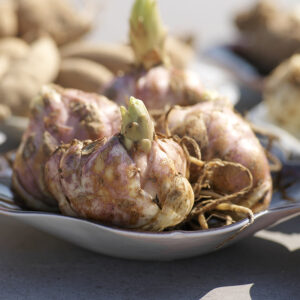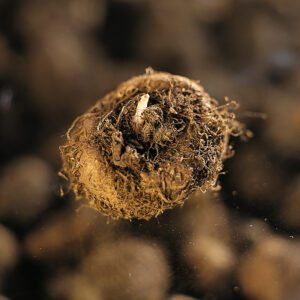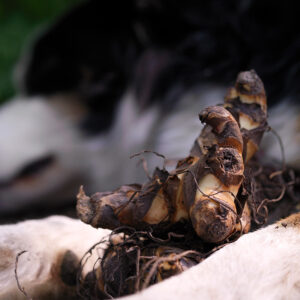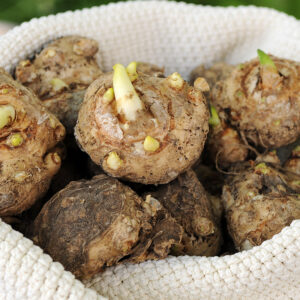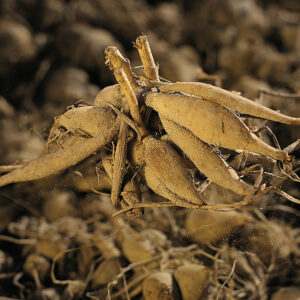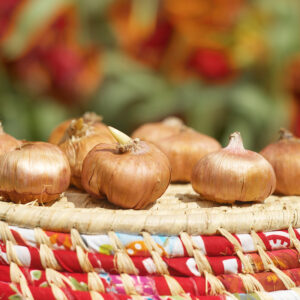Spring is here! The grass is green, buds are swelling and flowers are beginning to emerge. Planting season has arrived. The excitement of a tracking email has hit your inbox. The order of bulbs will arrive in a couple of days. You patiently wait a couple of days. Finally, “delivery day” has arrived! You rush to get the package, open the box, and are ready to plant. However, this is your first time planting flower bulbs in spring, and aren’t sure if the bulbs look normal and healthy. We are here to help with general summer flower bulb basics: what flower bulbs should look like, and are they healthy?
Summer Flower Bulb Basics: What Do Healthy Flower Bulbs Look Like
How do I know if my flower bulbs are healthy?
Not all flower bulbs look the same. Therefore, it can be difficult to know what is healthy for one type of bulb and what is not healthy for another. Generally, flower bulbs that are healthy are firm, may have eyes or growth showing, and smell like earth. If bulbs are squishy or crumbly and dry, that is a good indication that there is a health concern. Also, if bulbs have a rotten smell, combined with squishiness, and excessive mold that is a good indication that the bulbs are not healthy.
In addition to flower bulb types being different some things that may seem concerning often aren’t. An example of something seen on flower bulbs that raises concern but doesn’t always need to is blue storage mold on flower bulbs. When we see mold we associate it with mold on our food and think that the bulb must be discarded. While there are certain levels of mold that will compromise the health of a bulb, a small amount of blue storage mold typically won’t have ill effects on the bulb. When the bulb is planted, starts to grow and no longer in storage that mold will disappear. Removing the blue mold prior to planting can be helpful but is not 100% necessary.
Dried roots are another thing seen on flower bulbs that can raise concern. Dried roots may appear that the bulb is dried out and no longer viable. However, the dried roots seen on flower bulbs like bearded iris, begonias, and calla lilies are from the past season. Bulbs are harvested months before planting time and processed so they can be stored in their dormant state until planting time, which is why you may see dry roots. Once planted the bulb will grow new roots as they establish themselves.
Summer Flower Bulb Basics: Identification and Health Indicators
What do healthy begonia tubers look like?
Begonia tubers are brown, round, flat, and have a depression in the center of the bulb. Eyes, which are where the growth comes from are often visible. Eyes on a begonia tuber are light pink and can range from the size of a pinhead to noticeable where leaves are starting to form. Early shipments of begonia tubers may not present visible eyes. This does not mean the tuber will not grow or has no eyes. If the tubers are firm to the touch, that is the best indication that the bulbs are healthy.
The tubers should be firm, with a slight give. If the tubers can be squished easily that is a good indication that they are not healthy. If the tubers are dry and crumble when squeezed gently this is also an indication that the bulbs are not healthy.
What do healthy canna lily rhizomes look like?
Canna lily rhizomes are round, horizontal structures with growth points called eyes. They can be a bit knotty and twisted. The past season’s dried leaves may be present emerging from the eyes of the rhizomes. Canna lily rhizomes can range in color from bone color to beige to bronze/purple. Signs of rotten or unhealthy canna lilies are softness, as well as mostly dark brown or black rhizomes.
What do healthy calla lily bulbs look like?
Calla lilies are formed from rhizome-like bulbs. They are round and flat with several eyes that growth comes from. Calla lilies should be tan in color and relatively firm with some give. If the calla lily rhizomes can easily be squished or crumble, it is a good sign that they are not healthy. A small amount of storage mold may be present on calla lily rhizomes, this typically will not have an adverse impact on the growth of the calla lilies.
What do healthy dahlia tubers look like?
Dahlias grow from a clump of finger-like tubers. The multiple “fingers” will attach together at a central point called the crown. The tubers should be a straw/tan color. They hold moisture for the plant and will have a firm and plump feel to them. Since the tubers are dormant and have been holding moisture and energy until planting time they may lose some moisture during the storage process. Some loss of moisture is normal and the tubers may even appear a bit wrinkled. If the tubers are exceptionally light and dry-looking this may be cause for concern.
Soft and squishy spots at the crown of the dahlia tuber should also be cause for concern. Light storage mold on the tubers is usually ok and will disappear when the tubers are planted. If some of the “fingers” separate from the crown, they can be planted. If all the fingers separate from the crown it is best to replace those tubers since they most likely at this point will not have an eye for which growth will come from.
What do healthy gladiolus bulbs look like?
Gladiolus grow from a corm and resemble a true bulb. The corms should be firm with a papery outside. Some light storage mold may be present on the gladiolus corms. However, once planted and the corms begin to grow the mold will disappear. The gladiolus bulbs should feel firm.
What do healthy lily bulbs look like?
Asiatic lilies, oriental lilies, orienpet lilies, and tiger lilies all look similar when dormant. Lilies are true bulbs made up of many scales. The scales will be white to pink in color. The bulbs should be firm with some give to them. Lily bulbs are stored in cold conditions to help keep them dormant. When exposed to temperatures above 55 degrees growth occurs. Some small growth may be seen when your lilies arrive. If the top growth is broken off the flower bud will most likely be broken and the bulb will not produce a flower this season. However, since they are perennial they will recover and produce flower buds in subsequent years.
What do healthy caladium bulbs look like?
Caladium tubers are round and flat. It can be difficult to know what side is up when planting caladium, especially if growth points aren’t showing, and often they are not. Plant caladium on its side if unsure of which side is up. Caladium should be a rich brown color and firm when squeezed. They are cold-sensitive, and if exposed to below-freezing temperatures will often become squishy when gently squeezed.
Healthy Plants Start with Healthy Bulbs
Growing bulbs in spring for summer blooms is an effective way to add color to your garden. With these summer flower bulb basics, you can know if the bulbs you are planting will grow into healthy plants.
There are general principles that apply to all flower bulbs and their health. If the bulbs are dry and crumbly they most likely do not have enough moisture to thrive. If the bulbs are soft and mushy they will continue to rot, and also will not be viable for growing. However, there are a lot of grey areas and circumstances that can cause concern. If you are unsure about the bulbs you are planting take pictures of them and contact the company you purchased them from for additional information. Bulbs are rather resilient and will grow, even if they aren’t 100% perfect in appearance!


